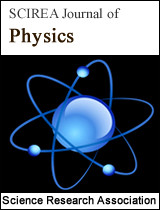Light: Particle & Wave
DOI: 532 Downloads 15789 Views
Author(s)
Abstract
Light displays particle and wave properties within the bounds of the inequality, K^2+V^2≤1, where K represents particle information and V represents corresponding wave information. Using two laser beams that cross and then diverge from each other we explore the inequality. Results, based on semiclassical analysis, are in conflict with the inequality. However, analysis based on quantum electrodynamics resolves the conflict and uncovers a region where particle and wave aspects of light develop independently. Independent development of wave and particle aspects implies that they represent separate realities.
Keywords
Double-slit experiment; Conservation laws; Particle-Wave duality
Cite this paper
Eduardo Flores, Jeffrey Scaturro,
Light: Particle & Wave
, SCIREA Journal of Physics.
Volume 3, Issue 2, April 2018 | PP. 66-80.
References
| [ 1 ] | en.wikipedia.org/wiki/Interpretations_of_quantum_mechanics |
| [ 2 ] | R. Feynman, The Feynman Lectures on Physics, Vol. III (Addison-Wesley), p. 1-1 |
| [ 3 ] | B.-G. Englert, Fringe visibility and which-way information: An inequality. Phys. Rev. Lett. 77 2154 (1996). |
| [ 4 ] | D. Greenberger and A. Yasin, Simultaneous wave and particle knowledge in a neutron interferometer. Phys. Lett. A 128, 391 (1988). |
| [ 5 ] | M. O. Scully, & M. S. Zubairy, Quantum Optics (Cambridge Univ. Press, 1997). |
| [ 6 ] | P. N. Kaloyerou, Critique of Quantum Optical Experimental Refutations of Bohr’s Principle of Complementarity, of the Wootters–Zurek Principle of Complementarity, and of the Particle–Wave Duality Relation. Found. Phys., 46 (2) 138-175 (2016) |
| [ 7 ] | S. Dürr, and G. Rempe, Can wave–particle duality be based on the uncertainty relation? Am. J. Phys. 68, 1021 (2000). |
| [ 8 ] | R. Loudon, The Quantum Theory of Light, 3rd Ed. (Oxford Univ. Press, 2000), pp. 226. |
| [ 9 ] | S. S. Afshar, E. V. Flores, K. F. McDonald, E. Knoesel, Paradox in particle-wave duality. Found. Phys., 37 (2) 295-305 (2007). |
| [ 10 ] | O. Steuernagel, Afshar’s experiment does not show a violation of complementarity. Found. Phys. 37, 1370–1385 (2007) |
| [ 11 ] | V. Jacques, N.D. Lai, A. Dréau, D. Zheng, D. Chauvat, F. Treussart, P. Grangier, J.-F. Roch, Illustration of quantum complementarity using single photons interfering on a grating. New J. Phys. 10, 123009 (2008) |
| [ 12 ] | R.E. Kastner, On visibility in the Afshar two-slit experiment. Found. Phys. 39, 1139 (2009) |
| [ 13 ] | E. V. Flores and J. M. De Tata, Complementarity Paradox Solved: Surprising Consequences. Found. Phys. 40, 1731–1743 (2010) |
| [ 14 ] | A. Daniels, J. Kupec, T. Baker & E. Flores, arXiv:1612.00441 |
| [ 15 ] | K. Vyas & K. Rao Lolla, High resolution diameter estimation of microthin wires by a novel 3D diffraction model, Proc. SPIE 8133, Dimensional Optical Metrology and Inspection for Practical Applications, 813311 (September 13, 2011) |
| [ 16 ] | J. D. Bjorken & S. D. Drell, Relativistic Quantum Mechanics (McGraw-Hill, New York 1964), pp. 96. |
| [ 17 ] | M. J. G. Veltman, Facts and Mysteries in Elementary Particle Physics (World Scientific Publishing Co. Pte. Ltd., 2003) pp. 254. |
| [ 18 ] | R. Karplus & M. Neuman, The Scattering of Light by Light. Phys. Rev. 83, 776 (1951). |
| [ 19 ] | M. F. Pusey, J. Barrett, & T. Rudolph, On the reality of the quantum state. Nature Phys. 8, 476–479 (2012). |
| [ 20 ] | M. Ringbauer, B. Duffus, C. Branciard, E. G. Cavalcanti, A. G. White, A. Fedrizzi, Measurements on the reality of the wavefunction. Nature Phys. 11, 249-254 (2015). |
| [ 21 ] | G. C. Knee, Towards optimal experimental tests on the reality of the quantum state. New J. Phys. 19 023004 (2017). |
| [ 22 ] | E. Hecht & A. Zajac, Optics (Addison-Wesley, 1974) |

